The Straight Scoop on Camp Lejeune Litigation
As early as WWII, Military bases used and disposed of chemical degreasers and other toxic substances that were later determined to contaminate drinking water & pose multiple health risks.
Volatile organic compounds were detected at Camp Lejeune in 1982 and traced to drinking water coming from two of the eight water treatment plants on the base. The U.S. Department of Veterans Affairs (VA) reports that from 1953 to 1985 the systems that supplied drinking water to two housing areas at Camp Lejeune were contaminated with industrial chemicals. During this period, close to 9,000,000 service members were potentially exposed to this harmful water, according to the VA, making Camp Lejeune one of the worst cases of water contamination in U.S. history.
If you worked or resided at Camp Lejeune between 8/1/1953 and 12/31/1987 and:
If you have been diagnosed with at least one of the following cancers:
- AML (Acute Myeloid Leukemia)
- Bladder Cancer
- Brain Cancer
- Breast Cancer
- Central Nervous
System Cancer - Cervical Cancer
- Colon/Colorectal Cancer
- Esophageal Cancer
- Hodgkin’s Lymphoma
- Kidney Cancer
- Leukemia
- Liver Cancer
- Lung Cancer
- Multiple Myeloma
- Myelodysplastic Syndrome
- Non-Hodgkin’s Lymphoma
- Ovarian Cancera
- Prostate Cancer
- Rectal Cancer
- Thyroid Cancer
Or other serious diseases:
- ALS (Amyotrophic Lateral Sclerosis)
- Aplastic Anemia
- Brain Cancer
- Cardiac birth defect
- Central Nervous
- Epilepsy
- Fatty Liver
- Female Infertility
- Immune disorders
- Kidney damage
- Miscarriages
- Liver Cancer
- MS (Multiple Sclerosis)
- Nerve damage
- Neurobehavioral effects
- Parkinson’s disease
- Renal toxicity/disease
- Scleroderma
For more information and to speak to a local lawyer, call us at


